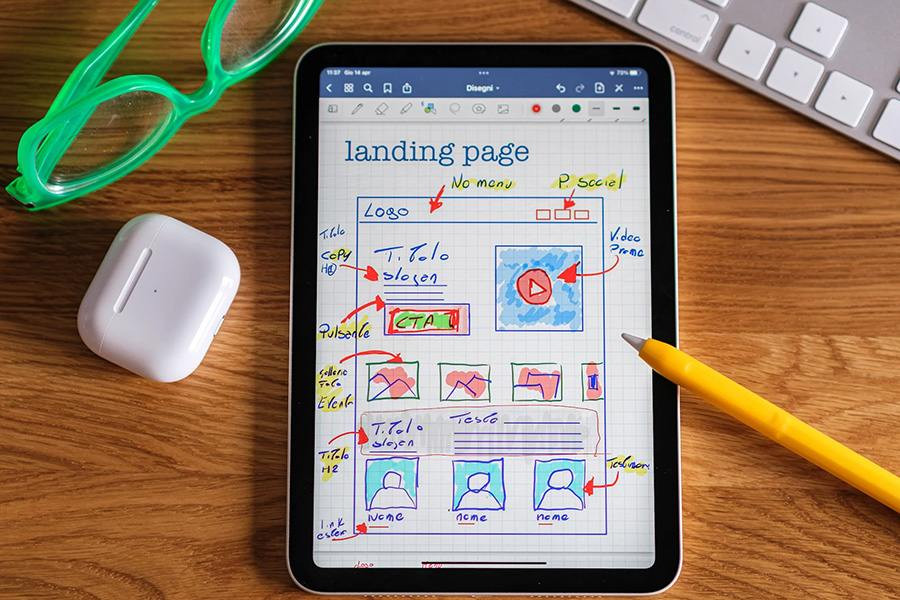Creating a website is essential to your success as a small business owner. Your website is a digital storefront, allowing potential customers to discover your business, learn about your products or services, and connect with your brand. However, creating a website can be daunting, especially if you need to familiarise yourself with web design best practices.
In this blog post, we'll discuss ten things to think about when getting a small business website design, from choosing a platform to optimising for the search engines.
1 - Platform
When creating a website, there are plenty of platforms to choose from, such as WordPress, Shopify, and Wix. Each platform has unique features, strengths, and weaknesses, so choosing one that meets your business's specific needs is essential.
For example, suppose you plan to sell products online. In that case, you must choose a platform that offers e-commerce functionality. If you're creating a blog, select a platform optimised for content creation and sharing.
2 - User Experience
Your website's design should prioritise the user experience, making it easy for visitors to navigate and find what they want. This design requirement means using straightforward navigation, simple layouts, and appropriate fonts and colours. Your website should be intuitive and easy to use, with a clear hierarchy that guides visitors to important information. Visitors should be able to find what they need quickly and easily without clicking through multiple pages or menus.
3 - Responsive Design
In today's mobile-first world, having a responsive website design is crucial. It means that your website should adapt to different screen sizes and devices, ensuring that your content looks great no matter how it's accessed.
Whether visitors use a desktop computer, tablet, or smartphone, your website should be easy to use and navigate. Easy navigation is crucial and means that your website should be optimised for touchscreens, with buttons and menus that are easy to tap and interact with.
4 - Branding
Your website should reflect your brand's personality, values, and style. This means using appropriate colours, fonts, and imagery that align with your brand's identity and messaging. Your website should be consistent with your other branding efforts, such as your logo, business cards, and social media profiles. This consistent branding can help build brand recognition and establish trust with your audience.
5 - Content
The content on your website should be informative, engaging, and relevant to your audience. These elements include using appropriate language, providing helpful information, and including calls to action to encourage visitors to take action. Your website should be a valuable resource for your audience, providing them with the information they need to make informed decisions about your products or services.
6 - Visuals
In addition to high-quality written content, your website should include visually appealing elements, such as images, videos, and graphics. These can help break up text and make your website more engaging and memorable. Your visuals should be consistent with your brand's identity and messaging. They should support your content and enhance your user experience.
7 - Security
Security should be a top priority when it comes to your website. You must use secure hosting, HTTPS encryption, and strong passwords to protect your website and user data from cyber threats. Your website should also regularly update the latest security patches and software updates to prevent vulnerabilities and exploits.
8 - Analytics
To understand how your website is performing and identify areas for improvement, you'll need to use website analytics tools, such as Google Analytics. This powerful tool will help you track website traffic, user behaviour, and other vital metrics. By analysing your website's data, you can make informed decisions about improving your user experience, increasing engagement, and driving more traffic to your website.
9 - SEO
Search engine optimisation (SEO) is essential to ensuring that your website is visible on search engine results pages. SEO is achieved by using appropriate keywords, optimising meta tags, and creating high-quality content relevant to your audience. SEO helps improve your website's visibility in search results, making it easier for potential customers to find you online. Optimising your website for search engines can increase traffic to your site and drive more leads and sales.
10 - Maintenance
Finally, keeping your website up-to-date and secure is essential by regularly updating software, monitoring analytics, and making necessary design, content, and functionality changes. Websites require ongoing maintenance to ensure they remain functional and secure. Your brand and business could be severely damaged by your website being hacked or wholly removed.
Conclusion
Creating a small business website design can seem overwhelming. Still, by following these ten things to think about when getting a small business website design, you can ensure your website is well-designed, user-friendly, and optimised for success. From choosing a platform to optimising for SEO, these key factors can help you create a website that represents your brand and drives business growth.
If you're thinking about creating a website for your small business, it's essential to take the time to think about your goals, your audience, and your budget.
Consider working with a professional web design agency or freelance web designer to ensure that your website is designed to meet your specific needs and objectives. With the right strategy, design, and optimisation, your website can be a valuable tool for growing your business and reaching new customers.
Considering all of these factors, you can create a website that stands out from the competition and helps you achieve your business goals.
Are you ready to take the next step and create a website for your small business?
Photo by: Davide Baraldi
Bobby S
BeMunchie







